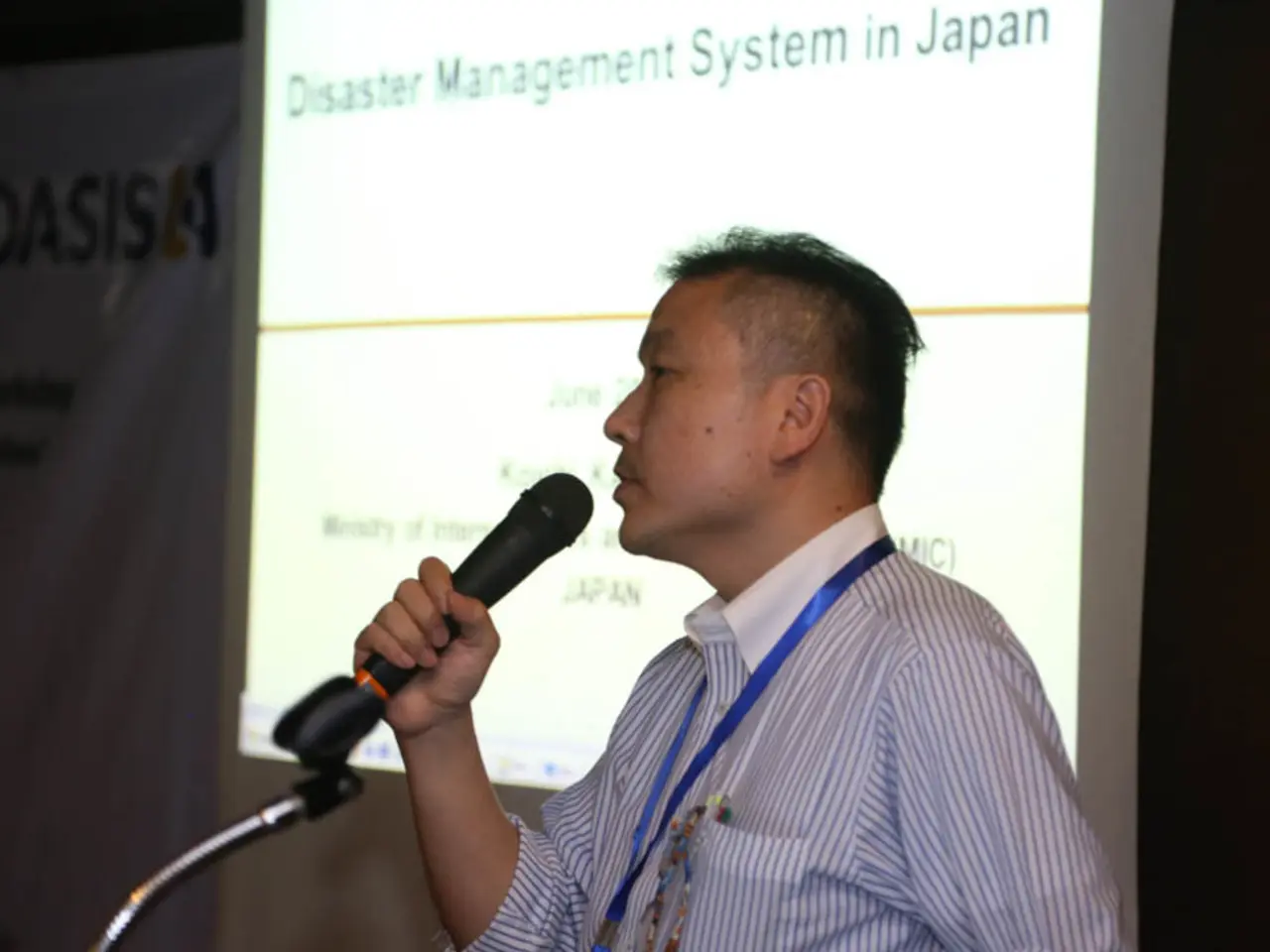Unprecedented Rainfall: Weeklong Downpour in Southern Regions, Reaches 200cm According to CWA Reports
Heavy Rain Wreaks Havoc in Southern Taiwan: Government Acts to Aid Recovery and Prevent Future Disasters
Taiwan is currently grappling with heavy rainfall in various regions, prompting numerous warnings and evacuations. The affected areas include Taichung, Changhua, Yunlin, Chiayi counties, the Hengchun Peninsula, and mountainous regions of New Taipei City [1]. In addition, torrential rain advisories have been issued for Tainan, Kaohsiung, Nantou County, Pingtung County, and mountainous areas in Yunlin and Chiayi counties [2].
The intense rainfall, which peaked from Monday to Thursday last week and occurred again over the weekend, has resulted in three deaths, four missing, and 50 injuries as of 6:30pm yesterday [3]. Kaohsiung's Taoyuan District saw a total rainfall of 2,205mm, while Pingtung County's Sandimen Township had 2,060.5mm of rainfall [4]. Tainan's Nanhua District recorded 1,833mm of rainfall, and Yunlin County's Caoling had 1,025mm of rainfall [4].
In response to the devastating effects of the heavy rainfall, the Taiwan Cabinet has proposed the Post-Typhoon Danas Reconstruction Special Act. Premier Cho Jung-tai expects this legislative measure to be approved at a Cabinet meeting on Thursday [5]. The act aims to provide financial aid and support for flood victims and facilitate recovery and reconstruction efforts following the severe flooding caused by Typhoon Danas and continuous heavy rainfall across central and southern Taiwan in 2025 [2][5].
The act focuses on financial recovery support and establishing robust flood control and water management infrastructure to mitigate future disaster impacts in Taiwan’s flood-affected regions. It includes a special budget initially set at NT$30 billion (about US$1 billion), which the government aims to increase to accelerate reconstruction, provide housing repairs, support affected households (especially lower-income groups), and assist local governments in expediting rehabilitation grants and work allowances for victims [1][3].
Regarding priorities for flood control and water management, the act and related government plans emphasize:
- Funding a four-year, NT$100 billion (US$3.4 billion) initiative aimed at river management and drainage improvement to reduce the risk of future flooding [2].
- Investment in pumping equipment and other water management infrastructure to improve drainage capacity and resilience [2].
- Coordination across central ministries and local governments to enhance disaster response and prevent further casualties or infectious disease outbreaks, such as dengue fever [2].
- Support for large-scale waste removal and environmental disinfection during recovery to mitigate secondary hazards from flooding [2].
Premier Cho Jung-tai highlighted the importance of closely integrated efforts between central and local authorities, as well as assistance to affected communities, to ensure an effective and timely recovery process from the flood damage incurred [1][2].
In addition, the Cabinet has approved a plan to enhance river and drainage regulation by local governments, with a total of NT$100 billion allocated over a four-year period [6]. The plan aims to improve Taiwan's flood control systems and make them more resilient to future disasters.
As the situation remains critical, the Central Weather Administration has issued precipitation warnings through yesterday to this morning [2]. Three factors are contributing to the intensive rainfall in southern Taiwan: successive southwestern air currents, unstable air brought in by southwesterly winds, and orographic rainfall caused by the mountainous topography [7].
Extreme torrential rain advisories have been issued for mountainous regions in Tainan, Kaohsiung, and Pingtung County, with forecasted rainfall exceeding 500mm in 24 hours [8]. As of now, about 576 of the evacuated residents are staying with relatives in low-lying areas, while the other 255 are in shelters [9]. A total of 831 local residents in Pingtung County have been pre-emptively evacuated from mountainous areas [10].
The Taiwanese government is working tirelessly to address the ongoing crisis and provide support to those affected. The approval of the Post-Typhoon Danas Reconstruction Special Act and the enhancement of flood control and water management infrastructure will undoubtedly be crucial in the recovery and rebuilding process.
References: 1. https://www.taipeitimes.com/News/taiwan/archives/2025/09/14/2003711437 2. https://www.focus-taiwan.tw/news/aipl/20250914001603 3. https://www.cna.com.tw/news/acn/202509140026.aspx 4. https://www.focus-taiwan.tw/news/aipl/20250914001603 5. https://www.taiwannews.com.tw/en/news/4564778 6. https://www.cna.com.tw/news/acn/202509140026.aspx 7. https://www.cna.com.tw/news/acn/202509140026.aspx 8. https://www.focus-taiwan.tw/news/aipl/20250914001603 9. https://www.taiwannews.com.tw/en/news/4564780 10. https://www.cna.com.tw/news/acn/202509140026.aspx
- The ongoing crisis in southern Taiwan, exacerbated by heavy rainfall, has led to the Taiwan Cabinet proposing the Post-Typhoon Danas Reconstruction Special Act, which includes funding for environmental-science projects to improve flood control and water management infrastructure.
- In an effort to combat the intensifying climate-change effects on the environment, the Taiwanese government is looking toward science and general-news sources for solutions to mitigate future weather-related accidents, such as the devastating floods witnessed in 2025.
- The general public is encouraged to stay informed about the continuous heavy rainfall advisories and evacuation notices, as the Taiwanese government works to reduce the risk of accidents and future environmental disasters through comprehensive environmental-science and flood-management measures.








